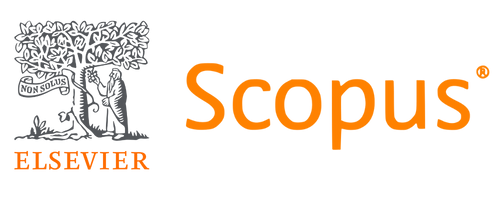MOLECULAR CHARACTERIZATION OF CONTRACAECUM RUDOLPHII HARTWICH, 1964 (NEMATODA: ANISAKIDAE) FROM THE CORMORANT PHALACROCORAX CARBO IN IRAQ
DOI:
https://doi.org/10.26842/binhm.7.2020.16.2.0135Keywords:
Contracaecum rudolphii, GenotypeITS-1, Iraq, Phalacrocorax carbo, Polymerase chain reaction (PCR).Abstract
Contracaecum rudolphii Hartwich, 1964 is a nematode which causes major concerns to human and wildlife animal’s health. However, the population genetics of C. rudolphii has been poorly studied in Iraq. In order to gain a deeper understanding in the outline of the genetic diversity of the nematode C. rudolphii that were isolated from its host cormorant Phalacrocorax carbo (Linnaeus, 1758), in the middle areas of Iraq, twenty specimens of C. rudolphii adults were isolated from nine individuals of P. carbo. The first (ITS-1) internal transcribed spacers (ITS) of ribosomal DNA (rDNA) of C. rudolphii were amplified using conventional polymerase chain reaction (PCR); then, the amplicons were subjected to sequencing. Concatenation of ITS-1 (rDNA) sequences resulted in four unique genotypes that have not been previously recorded in Iraq. The present study showed that the most common genotype occurred in 85% of C. rudolphii, and in 88.9% of cormorants. Furthermore, the infrapopulation difference in the genotypes was fairly high, with an average of 1.3 ± 0.48 genotypes per host of those with ≥two nematodes. All the sequences of the current study were distributed into two different populations. The sequences of ITS-1 for the first population had the highest similarity to ITS-1 sequence of C. rudolphii B, while the sequences of ITS-1 for the second population had the highest similarity to ITS-1 sequence of C. rudolphii A. This study provides an insight about the genetic divergence of C. rudolphii among P. carbo in Iraq. As well, the results likely support the hypothesis that C. rudolphii represents a complex of at least two sibling species.
Received Date: 22 June 2020
Accepted Date: 13 August 2020
Downloads
References
Allouse, B. A. 1961. Birds of Iraq. Vol. 2. Baghdad: Ar-Rabita Press, 279 pp. (In Arabic).
Al-Moussawi, A. A. 2017. Insights at morphological features of Contracaecum rudolphii Hartwich, 1964 (Nematoda: Anisakidae) as revealed by scanning electron microscope (SEM). Journal of Entomology and Zoological Studies, 5:116-119.
Al-Moussawi, A. A. and Mohammad, M. K. 2011. Contracaecum rudolphii Hartwich, 1964 (Nematoda: Anisakidae) in the cormorant Phalacrocorax carbo (Linnaeus, 1758) wintering in Baghdad area: A new host record in Iraq. Bulletin of the Iraq Natural History Museum, 11(3):7-16.
Amato, J. F., Monteiro, C. M. and Amato, S. B. 2006. Contracaecum rudolphii Hartwich (Nematoda, Anisakidae) from the Neotropical Cormorant, Phalacrocorax brasilianus (Gmelin) (Aves, Phalacrocoracidae) in southern Brazil. Revista Brasileira de Zoologia, 23 (4):1284-1289.
Barrueto, M., Ford, A.T. and Clevenger, A. P. 2014. Anthropogenic effects on activity patterns of wildlife at crossing structures. Ecosphere, 5(3):1-19.
Bartlett, C.M. 1996. Morphogenesis of Contracaecum rudolphii (Nematoda: Ascaridoidea), a parasite of fish-eating birds, in its copepod precursor and fish intermediate hosts. Parasite, 3 (4):367-376.
Bookhout, C. and Greene, K. 2019. Chronic epigastric pain associated with gastric anisakidosis. IDCases, 15:e00515.
Cole, R. and Viney, M. 2018. The population genetics of parasitic nematodes of wild animals. Parasites and Vectors, 11(1):590.
D’Amelio, S., Cavallero, S., Dronen, N.O., Barros, N. B. and Paggi, L. 2012. Two new species of Contracaecum Railliet & Henry, 1912 (Nematoda: Anisakidae), C. fagerholmi n. sp. and C. rudolphii F from the brown pelican Pelecanus occidentalis in the northern Gulf of Mexico. Systematic Parasitology, 81(1):1-16.
Daszak, P., Cunningham, A.A. and Hyatt, A.D. 2001. Anthropogenic environmental change and the emergence of infectious diseases in wildlife. Acta Tropica, 78(2):103-116.
Dziekońska-Rynko, J. and Rokicki, J. 2007. Life cycle of the nematode Contracaecum rudolphii Hartwig, 1964 (sensu lato) from northern Poland under laboratory conditions. Helminthologia, 44(3):95-102.
Dziekońska-Rynko, J. and Rokicki, J. 2008. Infestation of the black cormorants (Phalacrocorax carbo sinensis L. 1758) from the colony on the Selment Wielki, with the nematode Contracaecum rudolphii Hartwich, 1964 (Nematoda, Anisakidae). Oceanological and Hydrobiological Studies, 37(4):61-71.
Edgar, R. C. 2004. Muscle: multiple sequence alignment with high accuracy and high throughput. Nucleic Acids Research, 32(5): 1792-1797.
Guindon, S., Dufayard, J., Lefort, V., Anisimova, M., Hordijk, W. and Gascuel, O. 2010. New algorithms and methods to estimate maximum-likelihood phylogenies: assessing the performance of PhyML 3.0. Systematic Biology, 59 (3):307-321.
Kanarek, G. 2011. Population biology of Contracaecum rudolphii sensu lato (Nematoda) in the great cormorant (Phalacrocorax carbo) from northeastern Poland. Journal of Parasitology, 97(2):185-191.
Li, A-X., D’Amelio, S., Paggi, L., He, F., Gasser, R. B., Lun, Z. R., Abollo, E., Turchetto, M. and Zhu, X-Q. 2005. Genetic evidence for the existence of sibling species within Contracaecum rudolphii (Hartwich, 1964) and the validity of Contracaecum septentrionale (Kreis, 1955) (Nematoda: Anisakidae). Parasitology Research, 96:361-366.
Mattiucci, S., Turchetto, M., Bragantini, F. and Nascetti, G. 2002. On the occurrence of the sibling species of Contracaecum rudolphii complex (Nematoda: Anisakidae) in cormorants (Phalacrocorax carbo sinensis) from Venice and Caorle lagoons: genetic markers and ecological studies. Parassitologia, 44: 105.
Mattiucci, S., Cianchi, R., Nascetti, G., Paggi, L., Sardella, N., Timi, J., Webb, S. C., Bastida, R., Rodr´ıguez, D. and Bullini, L. 2003. Genetic evidence for two sibling species within Contracaecum ogmorhini Johnston & Mawson, 1941 (Nematoda: Anisakidae) from otariid seals of boreal and austral regions. Systematic Parasitology, 54 (1):13-23.
Mohammad, Z. A. A. and Hbaiel, M. K. 2019a. Morphological and Molecular Study of Contracaecum Larvae with a New Record of Contracaecum septentrionale in Al-Sanaf Marsh Southern Thi-Qar Province, Iraq. Indian Journal of Public Health Research and Development, 10 (10):1271-1276.
Mohammad, Z. A. A. and Hbaiel, M. K. 2019b. Isolate and identify of Contracaecum spp. nematodes from some aquatic bird species by using light microscope and scanning electron microscope. Journal of Education for Pure Science-University of Thi-Qar, 9(2):180-192.
Moravec, F. 2009. Experimental studies on the development of Contracaecum rudolphii (Nematoda: Anisakidae) in copepod and fish paratenic hosts. Folia Parasitologica, 56 (3):185-193.
Moravec, F. and Scholz, T. 2016. Helminth parasites of the lesser great cormorant Phalacrocorax carbo sinensis from two nesting regions in the Czech Republic. Folia Parasitologica, 63: 022.
Salim, M., Porter, R. and Rubec, C. 2009. A summary of birds recorded in the marshes of southern Iraq, 2005–2008. BioRisk, 3: 205-219.
Shamsi, S. 2014. Recent advances in our knowledge of Australian anisakid nematodes. International Journal for Parasitology: Parasites and Wildlife, 3(2):178-187.
Shamsi, S. 2019. Parasite loss or parasite gain? Story of Contracaecum nematodes in antipodean waters. Parasite Epidemiology and Control, (3):e00087.
Shamsi, S. and Aghazadeh-Meshgi, M. 2011. Morphological and genetic characterisation of selected Contracaecum (Nematoda: Anisakidae) larvae in Iran. Iranian Journal of Fisheries Sciences, 10(2):356-361.
Shamsi, S., Norman, R., Gasser, R. and Beveridge, I. 2009. Genetic and morphological evidences for the existence of sibling species within Contracaecum rudolphii (Hartwich, 1964) (Nematoda: Anisakidae) in Australia. Parasitology Research, 105: 529–538.
Szostakowska, B. and Fagerholm, H-P. 2012. Coexistence and genetic variability of Contracaecum rudolphii A and Contracaecum rudolphii B (Nematoda: Anisakidae) in cormorants, Phalacrocorax carbo sinensis, in the Baltic region. Journal of Parasitology, 98(3):472-478.
Takabayashi, T., Mochizuki, T., Otani, N., Nishiyama, K. and Ishimatsu, S. 2014. Anisakiasis presenting to the ED: clinical manifestations, time course, hematologic tests, computed tomographic findings, and treatment. American Journal of Emergency Medicine, 32 (12):1485-1489.
Torres, P., Valdivieso, J., Schlatter, R., Montefusco, A., Revenga, J., Marín, F., Lamilla J. and Ramallo, G. 2000. Infection by Contracaecum rudolphii (Nematoda: Anisakidae) in the Neotropic cormorant Phalacrocorax brasilianus, and fishes from the estuary of the Valdivia river, Chile. Studies on Neotropical Fauna and Environment, 35(2):101-108.
York, W. and Maplestone, P. A. 1962. The nematode parasites of vertebrates. Haf. Pub. Co., New York, 536 pp.
Younis, A. E., Saad, A. I. and Rabei, J. M. 2017. The occurrence of Contracaecum sp. larvae (Nematoda: Anisakidae) in four teleostean species from Lake Nasser, Egypt: morphological and molecular studies. The Journal of Basic and Applied Zoology, 78:9.
Zhu, X., D'Amelio, S., Paggi, L. and Gasser, R. B. 2000. Assessing sequence variation in the internal transcribed spacers of ribosomal DNA within and among members of the Contracaecum osculatum complex (Nematoda: Ascaridoidea: Anisakidae). Parasitology Research, 86:677-683.











